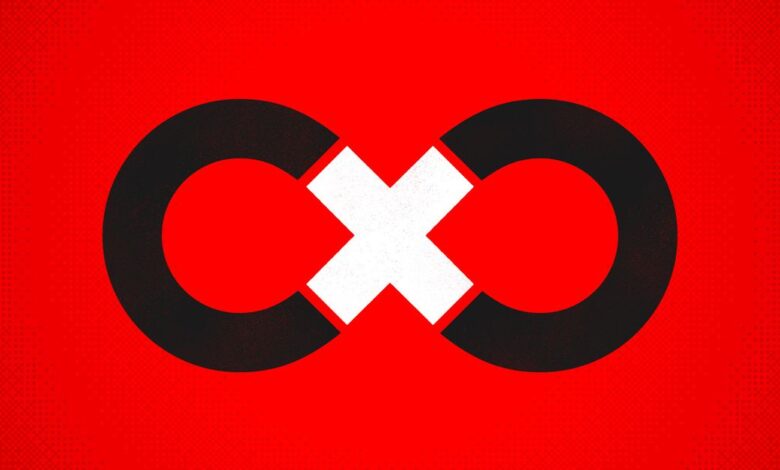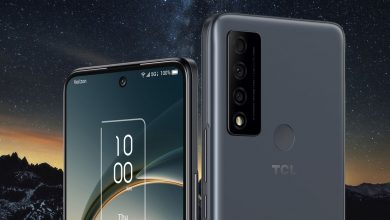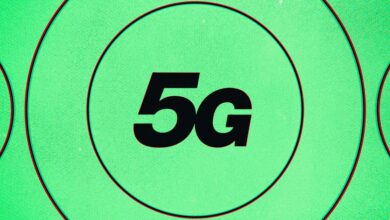Smartphone unlimited plans, explained – The Verge

Phone plans are notorious for including the worst kinds of jargon — things that seem to tell you what you’re signing up for but actually conceal a long list of conditions and exceptions.
This is the industry that brought us the term “anytime minutes.” Seriously, have you ever really thought about that phrase? Anytime minutes. Even the 10-year-old Portlandia sketch where Kumail Nanjiani sells Fred and Carrie a phone plan is still painfully accurate. (Go watch it for such gems as “After you pay for it, it is free” and “It’s just a one-time fee that you pay annually.”)
So it should come as no surprise that when wireless carriers call a service “Unlimited,” there are, in fact, limitations on it. T-Mobile recently brought attention to one of those practices known as “deprioritization” by introducing an unlimited plan without it. But that’s just one of a handful of fine print provisos that all three of the major US carriers impose on their customers. Here’s a jargon-free guide to the most common limitations on your favorite carrier’s so-called unlimited plans, postpaid and prepaid.
Premium data
You will likely see the phrase “premium data” or “premium network access” on your plan details; that’s a nice way of describing “deprioritization,” or “throttling” as it’s also called. This is when carriers temporarily slow down data speeds for their heaviest users when network traffic is high. The carriers say this practice is necessary to ensure networks aren’t overwhelmed. In many cases, deprioritization doesn’t kick in until users hit a certain monthly threshold of data usage — often 50GB — but some carriers’ lowest-tier plan subscribers are always subject to slowdowns, regardless of how much data they’ve used.
That’s the case for users on Verizon’s Start Unlimited plan and AT&T’s Unlimited Starter, while those on the carriers’ more expensive unlimited plans aren’t subject to slowdowns until they’ve used 50GB in a month. T-Mobile’s basic Essentials plan includes a 50GB threshold. Its most expensive plan, Magenta Max, is the only one of the major carriers’ plans that doesn’t include a limit on its fastest mobile data speeds.
Prepaid unlimited plans from all of the major carriers across the board are subject to slowdowns, regardless of how much data has been used.
Video streaming limits
With your smartphone connected to home Wi-Fi, you can stream video at whatever resolution you please. Streaming video over mobile data is another story. Just about every phone plan out there limits streaming video to 480p quality, but there are a few exceptions. But even the plans that do support higher-quality streaming usually require you to enable it in your account. If you do have this option and choose to enable it, just keep in mind that streaming video might eat into your monthly “premium data” allotment faster.
For example, Verizon’s more expensive unlimited plans include 720p streaming, but you need to log in to your account online and enable it. For an extra $10 per month, you can raise that to 1080p. And if you’re connected to the company’s fast Ultra Wideband 5G — which is only included on those more expensive unlimited plans — you’ll get streaming up to 4K.
The other two carriers work in a similar way. AT&T’s basic unlimited plans get 480p, and while the “Elite” plan includes 1080p, you’ll need to turn off a feature called “Stream Saver” in your account settings to enable it. T-Mobile’s most expensive plan, Magenta Max, includes 4K streaming, which customers need to activate. All others are limited to 1.5Mbps, which essentially translates to 480p.
With a couple of exceptions, customers on prepaid unlimited plans are restricted to 480p streaming, too. AT&T’s most expensive prepaid unlimited plan allows users to disable Stream Saver and get 1080p streaming if they like. Verizon prepaid customers on the unlimited plan with Ultra Wideband 5G service will also get 4K if they’re connected to that network. Some data-capped prepaid plans from T-Mobile and AT&T allow customers to opt for HD, but not so for basic unlimited plans.
Tethering
Another one for the category of “your unlimited data is not truly unlimited” is mobile tethering. Even though your phone might support tethering (using your mobile device’s data connection as a Wi-Fi hotspot or via a USB cable to your computer), your phone plan has limitations on if and how much you can use this feature. Basic unlimited plans tend to offer slow or no tethering at all, while even the most expensive plans include some limit to how much data you can use this way.
There’s no mobile tethering offered on Verizon and AT&T’s most basic unlimited plan. More expensive plans from both carriers offer progressively more generous 15GB and 30GB caps the more you pay. T-Mobile offers 3G tethering (600 Kbps) on its basic plan, which is adequate for web browsing but not ideal for streaming SD or HD video. Up to 5GB of much faster 4G / 5G data is included on its middle tier and a cap of 40GB on Magenta Max — these speeds will feel much closer to what you get with home internet.
Mobile tethering tends to not be included on basic prepaid unlimited plans; AT&T and Verizon offer it as an add-on for an additional monthly fee, while T-Mobile includes it at 3G speeds. The step-up prepaid unlimited plans include high-speed tethering across the board, albeit with a lower 10GB cap in all cases. Verizon does include unlimited Ultra Wideband 5G tethering for its top prepaid plan (again, if you can manage to find an Ultra Wideband signal).
Mexico and Canada
If there’s one way that your unlimited plan might actually be getting you more than you realized, it’s that your plan likely includes some international data for trips to Canada and Mexico. Most plans include, as a bare minimum, very slow 2G speeds in those countries, but a few include a certain amount of 4G data on either a monthly or daily basis.
Verizon makes it simple: it includes up to 0.5GB per day for all of its postpaid and prepaid unlimited plans. Once that daily cap is reached, you’ll get 2G speeds after that. AT&T only says that all unlimited plans — postpaid and prepaid — include data in Mexico and Canada but that “2G off-net data speeds may apply.”
T-Mobile’s basic postpaid Essentials plan gets 2G only; the top-tier plans include 5GB of 4G monthly and then 2G after that. The company’s prepaid unlimited plans don’t include even 2G data, and “additional charges apply for international use.” Instead, users can add 5GB of 4G data for use in Canada and Mexico for an additional $5 per month. T-Mobile and Verizon also specify that the majority of a subscriber’s usage must come from within the US; otherwise, the companies are entitled to cut off international service.
Miscellaneous
Those are the major items, but what else will you find if you go peering down the dark alleyways of your phone contract? Some are obvious, like clauses to keep you from turning your phone into your home Wi-Fi hub. Plans with generous tethering data allowances are more likely to include these details, stating, for example, that the majority of use must come from a smartphone or tablet. And of course, your contract prohibits you from certain types of bad behavior and illegal activity. But you knew that already.
You might also be pleasantly surprised to find discounted or subsidized streaming video services are included in your plan, too, but you’ll definitely want to read the conditions closely. Often, it’s a promotion for a set time period, like Verizon’s “Disney Plus for six months on us,” after which you’ll be charged on your monthly phone bill unless you cancel.
Others — usually on the more expensive plans — are included standard, like HBO Max included on AT&T’s Elite plan, and Netflix subscriptions on T-Mobile’s Magenta and Magenta Max. Even in those cases, you’ll want to read the conditions; a certain number of lines are required on T-Mobile to qualify for the Netflix deal, and the subscription offered may be for a more limited version, like SD quality only on one screen per account.
But there’s one more agreement in your contract to be aware of: the privacy policy. Specifically, all three major carriers sell anonymized data about their customers to third-party advertisers in the name of serving more relevant ads. It’s an unwelcome but extremely common practice.
The good news is that you can opt out of these programs. Verizon customers can do so by logging in to My Verizon and following the steps on the company’s privacy page. Likewise, T-Mobile customers can find instructions for opting out on the carrier’s privacy center page, and AT&T customers can opt out by logging in to their account’s privacy controls. That’s not going to stop the dozens upon dozens of other websites and services that you use from selling your information, but it’s at least one less source to worry about.
Source link




